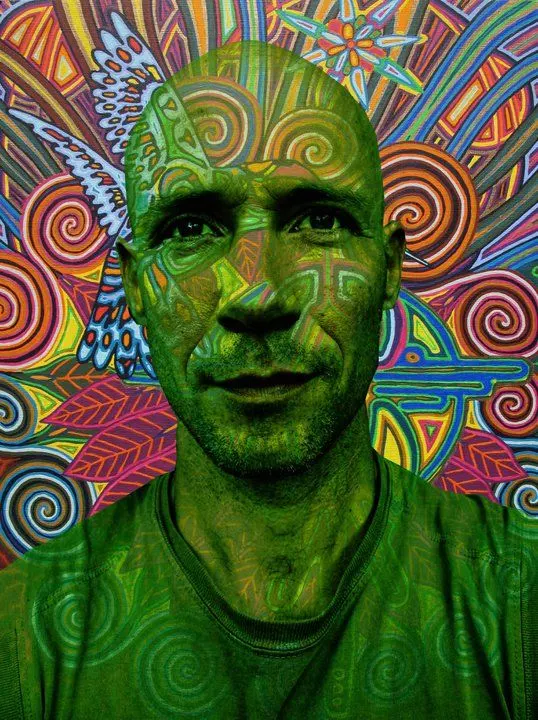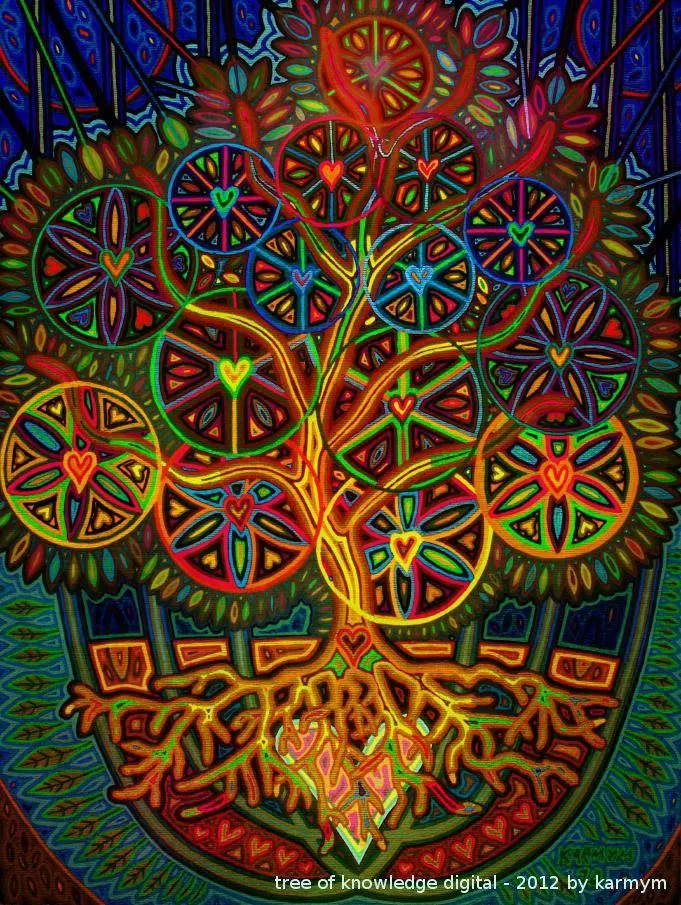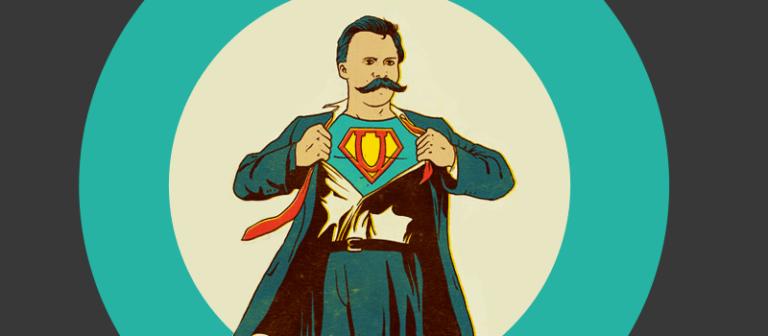‘Art washes away from the soul the dust of everyday life.’ ~ Pablo Picasso
Art is like visual affirmations that elevates consciousness and is a gateway to experience deeper realms. One such artist that caught our attention was Karmym (Markus Meier), a painter, yogi and traveler.
His art integrates yoga asanas (postures), sacred geometry and various elements of eastern philosophy to create stories and open your eyes to newer realities. Karmym’s art is vibrant and comes to life with the use of different colours that have a psychological effect on the mind. It creates a soothing and uplifting experience. Karmym captures his yogic practice of witnessing his mind as a way to connect with his core, and that reflects in his paintings. His art speaks to your soul in many unknown ways.

We spoke with Karmym aka Markus Meier who talks about his journey as an artist and a yogi.
Your art is quite unique and enlightening, what got you on this path?
I started painting when I became a father at the age of 30. Earlier I was interested in all kinds of art like books, music, dancing, painting, films but I spent my free time mostly dancing and traveling. So when I became a father I wanted to spend more time at home and I rediscovered my love for yoga and meditation which I use to practice in my childhood.
I began to connect with various yogis and discovered yogic art from around the world. I was delighted and started creating my own simple samples. These were paintings about hand mudras and yoga postures. With that I learned new aspects about yoga and so my yoga practice started to go deeper. Today my yoga practice and my art creation support each other.

What does Karmym mean?
Karmym was my email name at the time I started to paint. It is a play of words with my real name and then it is referring to the Sanskrit word ‘Karma’. For me it is clear that all my actions show results in the future. So it is important that we are as conscious as possible about how we act and react.
There are many sacred elements in your art, chakra symbols and yoga asanas, what is your reason behind this?

I felt very much at home when I began exploring the chakra system. It is for me a logical hierarchy of self-motivation or qualities of energies that influence our daily life. With a chakra symbol Yogis know exactly what quality I place in the painting.
While creating an art piece I try to tell a story that goes through the whole image. I grow with every painting and so I explore new possibilities to include new aspects and new symbols. Next to chakra symbols I include archetypal symbols that have a general meaning.
What is the importance of Yoga and meditation in life?
They both are tools to come back to normal life. There is no technology nor tools needed. You just return to a normal experience of your body and your consciousness. For me it is a possibility to calm down and to balance the energies in my body.


What has been your inspiration?
The inspiration to begin yoga has been a book about a yogi in my parents home when I was a little boy. This was in the 80s, when Yoga wasn’t as common in Europe as it is now. I was fascinated about the cleaning process for the body and mind.
With the book I learnt my first asanas. The inspiration for my artworks are the lives and teachings of people who found peace within.
Are there any visions or past experiences that has influenced your art?
Yes of course, it is my life until now that I see as a journey that influences my perception. There is no specific event but I traveled a lot backpacking and I was always excited to witness all the diverse cultures around the world.


What role does art play in shifting or raising consciousness of our fellow beings?
I’m a person that is very much inspired by art. Earlier I loved to read and watch valuable movies. Music always carried me in other moods and colorful fantasy worlds. All these experiences teach us a new aspect of life. Now I have a special interest in visual art, especially paintings. With my own painting I have the possibility to explore my own inner images and ideas.
It is the possibility to create a world or situation that speaks to the visitor who hasn’t had same experiences like myself. I love to explore artwork from others that show me another way of thinking. So artwork should be provoking in a good way, and it can help to find new ways or simply bring you back to your own core.

What is your philosophy in life?
I try to live a balanced life. When I was a child I realized that there are a lot of aspects to grow in. I can’t remember why but I always choose to train my weaker aspects instead of being very good in one aspect. Today I think that this was a good philosophy because it brings balance. As a youngster I was so very impatient and got angry when life didn’t run as I desired.
I always loved to do jogging and fitness, this helped to reduce aggression. Since I’m a father I learn a lot from my family and in these last years’ the most important aspect was to learn to accept the present situation. This acceptance helps a lot to maintain harmony in life and I’m very thankful for it.
Have you gone for Vipassana?
Yes, I’ve participated in a 10-day vipassana meditation retreat as taught by S.N. Goenka in 2008. It was my first meditation retreat and I still am very thankful for this opportunity. Afterwards I went to some shorter meditation retreats because I didn’t want to be away from my family including my two boys.
But when they are older I’m sure that I want to go for a 10-day retreat. In my daily life I sit from time to time in meditation but this isn’t a deep meditation. In yoga there are meditative aspects as well, when I rest for a longer time in an asana, I try to feel the body without thinking.
To see more of his artwork, visit – Karmym art.
























